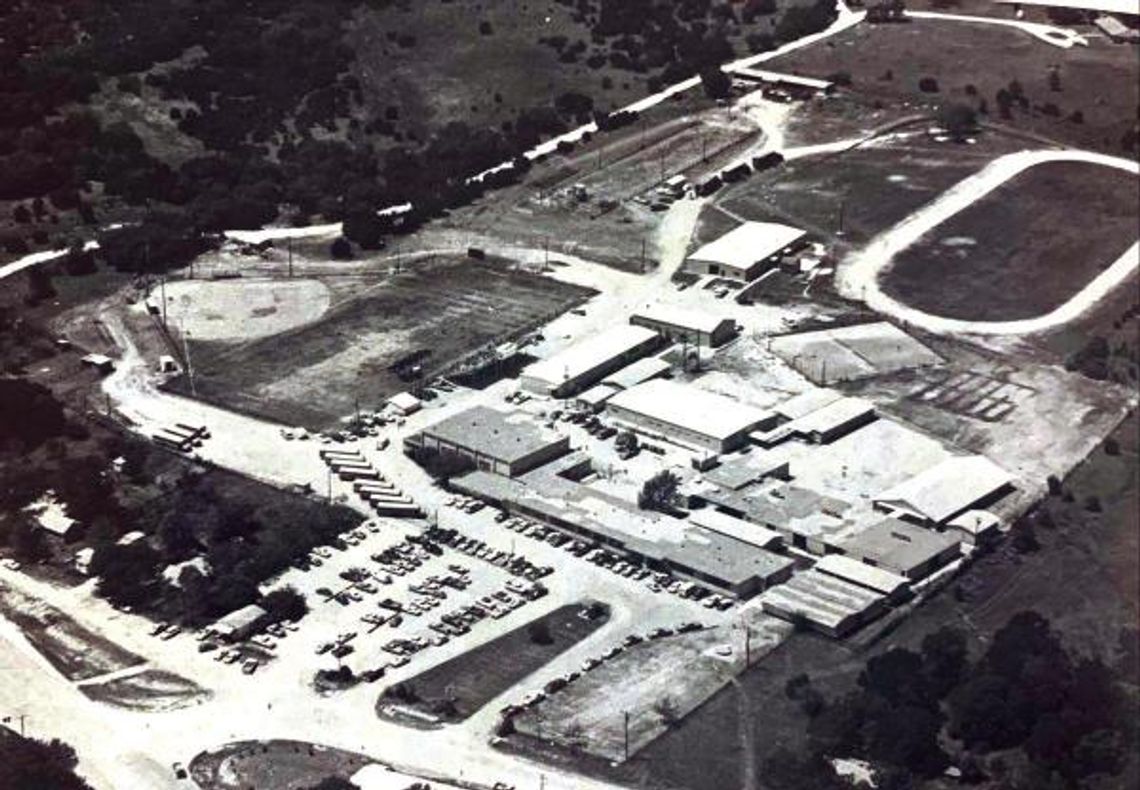Editor’s Note: The following article is part of an ongoing series about the history of school sports in the Dripping Springs area.
With the school consolidation process picking up steam in the 1930s and ‘40s, Dripping Springs enrollment began to grow, causing plans to be made for the future.
The gain in numbers gave school teams more students to pick from, as well as a need for more sporting facilities. In 1934, Dripping Springs ISD purchased 35 acres located between Creek Road and US Highway 290 to build a new campus for Dripping Springs High School. For some reason, the district changed its mind and chose to build a four-room high school building on the old campus in 1938 and sell the other property. School officials had their eye on making Dripping Springs a 12-grade system and were able to do this for the start of the 1941–1942 school year. That same year, the UIL changed to district assignments in all sports that could advance.
The decade of the 40s was split in half: WWII took up the first half, significantly affecting sports participation and game turnout. Many boys of age joined the armed forces and left school. One year, DSHS had a graduation class of only girls. The football struggled through one-win seasons the first three years but got it back to five wins per season as the war was ending.
In 1946, Dripping Springs showed it was getting serious about its sports program. Prior to this time, a principal would usually double as a coach. This year, it hired a coach with experience in the form of G.A. Pringle, Jr. He would inherit a strong group of athletes for the rest of the decade. The team went 5-3 their first year, and then behind the talent of Billy Breed, the 1947 team went undefeated (8-0) in the regular season but lost the bidistrict game. They were denied another crown in 1948 when Blanco edged them out in the last game. Not to be denied, the next year, they went 12-0 and were regional champions behind the likes of J.F. Glosson, Thomas Johnson, Harvey Goslin, Bobby Needham and Buddy White.
These same years proved to be prosperous in spring sports. The girls volleyball teams won the district competition in 1941, 1947–1948 and 1950, and the boys did the same in 1949. The boys won in softball in 1948 and 1950. Boys track also enjoyed some great years with titles in 1946, 1947 and 1950. Raymond Whisenant was a major point maker in the first two.
The next decade began with several major decisions. Most of the six-man football teams in the area were choosing to drop out or move up to 11-man. Dripping Springs took a vote and chose 11-man. This meant Dripping Springs would have a smaller enrollment compared to most opponents. It showed after they broke even the first year; the rest of the seasons that decade saw less than three wins, including two winless seasons.
Even when the new campus (presently the DSISD administration building) was built in 1949, the campus did not include an indoor gym. A bond election provided that first gym in December of 1952. The boys team celebrated by winning a tournament there in January of the following year.
Basketball was the most successful sport during the decade, but both girls and boys teams met the same fate many good teams do: a better team at the district level. In those days, only the champion could advance. Twice, early on, the boys won their zone but could not win the title. The rest of the time, the Tigers were having to contend with a strong Kyle program. For the Tigerettes, it was Geronimo Navarro High School. They did manage to break through for the title in 1960. The baseball team enjoyed titles in 1957– 1959 while the volleyball team won in 1957.
The final decision came in the early 50s when the three Lake Travis schools consolidated with Dripping Springs. That would expand the district from its original 30 square miles to a whopping 360 sq. mi.
.png)











